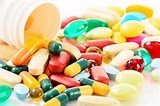Category: Depression
Chris Tuell Ed.D., LPCC-S, LICDC-CS
Clinical Director of Addiction Services Lindner Center of HOPE
Assistant Professor, Department of Psychiatry & Behavioral Neuroscience University of Cincinnati College of Medicine

In 1987, Francine Shapiro went for a walk. While on her walk, Francine was contemplating some very upsetting personal events that were occurring in her life at the time. But as she began to focus on this upsetting information, she noticed that her eyes began to flicker from side to side. More importantly, she noticed that the once upsetting information was no longer as upsetting. Shapiro felt that she had stumbled on some aspect of how the mind processes information. Eye Movement Desensitization and Reprocessing, better known as EMDR, was born.
For the past 30 years EMDR has become one of the most effective therapeutic approaches in the treatment of trauma. EMDR is not only approved by the American Psychiatric and Psychological Associations, but also by the United States Department of Defense and the Veterans Administration, as an effective therapy in the treatment of post traumatic stress disorder (PTSD). Dr. Shapiro believes that one of the major theories behind EMDR is the bilateral stimulation of both hemispheres of the brain. When we sleep at night, our brain continues to process information. This occurs during rapid eye movement sleep or better known as REM sleep.
The brain processes the events of the day, keeping what is important (e.g. family, work, school, friends), and purging what is unimportant (e.g., What I had for dinner last Tuesday). How many times have we have been faced with a tough decision and resorted to, “I’ll just sleep on it,” only to awake the next morning with a better idea of what to do? But when a traumatic event occurs, the processing of this information becomes disrupted. The brain becomes unable to process and clear the event or information, resulting in the trauma experience continuing to occur as if it is happening all over again. In this playing-out, the right hemisphere of the brain, the part of our brain that experiences emotions such as fear and anxiety, continues to be activated by the unresolved trauma. The patient experiences this activation through intrusive thoughts, flashbacks, and disturbing dreams, the basic elements of PTSD.
EMDR involves the bilateral stimulation of both hemispheres of the brain while targeting the upsetting aspects of the trauma. In therapy, the therapist recreates what happens naturally during REM sleep, with the movement of the eyes as they follow the therapist’s hand, stimulating both hemispheres of the brain. Over the years, additional bilateral stimulation methods have been found to be effective (i.e., tactile, audio). This targeting involves, not only activating the image of the event, but also identifying the negative thoughts, emotions and sensations experienced by the patient from the trauma. During the reprocessing of the trauma experience, the logical, rational part of the brain, the left hemisphere, is integrated with the right emotional hemisphere. This results in the patient having a more adaptive response to the trauma. The patient may still have memory of the event, but the emotional aspects of fear and anxiety have dissipated. During EMDR, the left hemisphere of the brain, the rational, logical part, is integrated with the emotional right hemisphere of the brain, resulting in the patient feeling and knowing that, “The trauma is no longer happening to me now; The trauma is in the past; I am safe now.”
EMDR is not a wonder cure nor is it a quick fix. EMDR involves hard work by the patient and it takes a good amount of clinical skills in order to implement. This is not about touching the person’s forehead and he or she is better. The patient and therapist have to be responsible and work at this process, but it does appear to go much more rapidly than traditional types of therapy. If a trauma can occur within a few moments, why do we automatically accept that it has to take years to undo it?
More than 20,000 practitioners have been trained to use EMDR since its discovery. The use of EMDR has been found to be beneficial in other areas of mental health besides, PTSD. Areas such as panic disorders, anxiety disorders, grief, pain, stress, addiction, and abuse, have shown to be responsive to this unique therapy. One aspect of EMDR that I have found to be valuable is the fact that it is unnecessary for me, as the clinician, to know all the details and specifics of a patient’s trauma in order for EMDR to be helpful. Many individuals who have experienced trauma stay clear of therapy for fear of reliving the memories and feelings. The EMDR protocol allows for such traumatic episodes to be addressed and reprocessed without describing the details of the trauma. As a practitioner, I have found EMDR to be a valuable therapeutic tool in assisting patients in moving past one’s past.
For more information about EMDR: https://www.emdria.org




